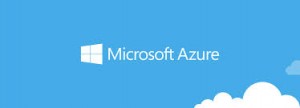IT Voice News: In view of the Federal government’s Cloud First strategy announced by the U.S. government, Microsoft said it is offering a number of strategies to deliver an optimal platform for an open and agile government.
 Microsoft Azure, the cloud platform from the software major, supports a number of open languages and platforms, including Java, PHP, Node.js, and Python.
Microsoft Azure, the cloud platform from the software major, supports a number of open languages and platforms, including Java, PHP, Node.js, and Python.
Azure runs on several open-source environments like Linux, Hadoop, MongoDB, Drupal and Joomla, run on the Microsoft platform, enabling agencies to get started quickly and take full advantage of our Azure cloud services.
With Azure, developers have the option to deploy applications and services in the cloud that do not depend on a specific platform. These applications can be delivered to users across a wide variety of device types and browsers, while supporting code reuse and collaborative development for continuous improvement in the future.
By moving traditional IT to cloud service, the Cloud First strategy has identified the availability of over $20 billion in savings. As for all those agencies who are identifying the number of modernizations and moves to the cloud, it is required to emphasis over environment that supports agile development, code reuse and thus allow the government to put all those the innovations they’ve created across all government agencies.
Beyond that, Microsoft cloud services also delivers the scalability required in today’s computing scenarios. It also offers a hybrid cloud platform which reaches across on-premises and the cloud, thereby allowing the agencies to select among the various open source languages, libraries, distributions, and platforms.
By plugging into the software services like GitHub and CodePlex, Microsost allows the developers to reuse code. The IT giant is also working with open source communities for promoting interoperability and making it easier for the customers to develop and manage mixed IT environments.
Recently, Microsoft had announced collaboration with Docker on adding Docker Hub into Azure. Thus, all those developers who want to create distributed, multi-container applications using Docker will have an option to use Linux or Windows server, and thereby it will also connect them to the growing Docker ecosystem of users and tools.






